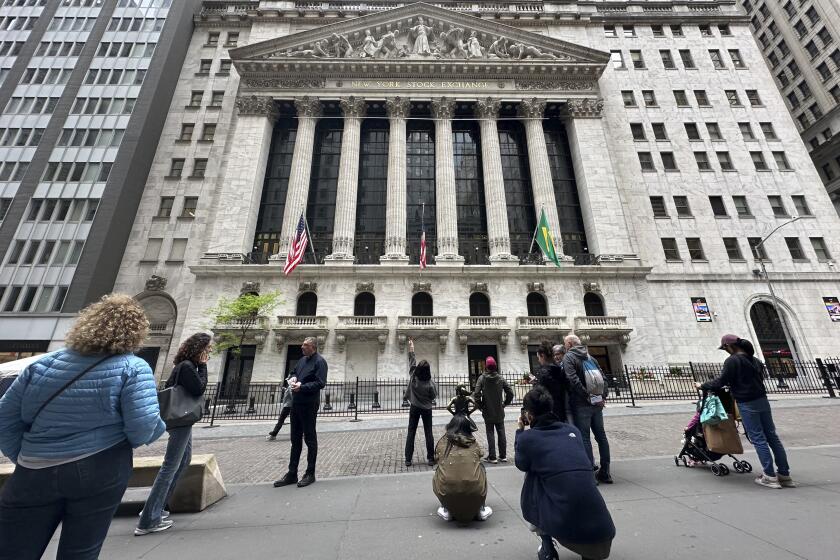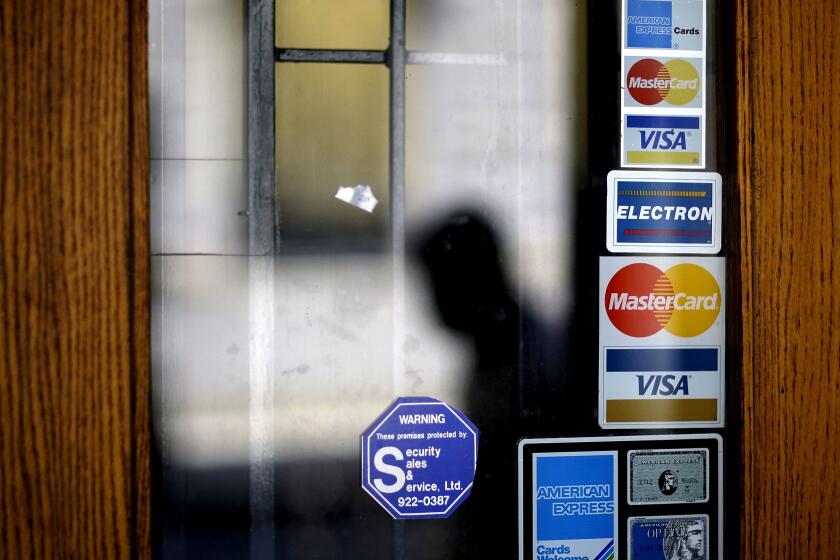Dow Dives 52.97; Investors Jittery Over Inflation News
The Dow Jones industrial average suffered its fourth-worst loss for a single day in history Friday as increases in a key inflation indicator and in the prime lending rate refueled investors’ fears of inflation and higher interest rates.
After a day of mostly sluggish trading, the closely watched indicator of 30 blue chip stocks lost about 18 points in the last 15 minutes of trading to finish at 2,272.52, down 52.97 points, or 2.3%, for the day. That is 16.92 points shy of the biggest single-day plunge, 69.89 points, which occurred April 3.
Standard & Poor’s index of 500 stocks fell 6.81 points, or 2.31%, to 287.43. And the New York Stock Exchange composite index declined 3.51, or 2.12%, to 162.25.
After a week in which the market struggled for a sense of direction, the Dow headed south at the opening bell Friday and never changed course. The reason: early morning reports that wholesale prices had taken a bigger jump than expected in April and that several major banks had raised their prime lending rate by a quarter-point to 8.25%.
By the end of a day of moderate trading--180.8 million shares traded hands--declining stocks overpowered advancing issues by a 5-to-1 margin.
Among those stocks bucking the market trend was Allegis, the parent company of United Airlines. Continuing takeover speculation sent its price up 1 to 72 3/8 and made it the Big Board’s most active issue Friday.
Another gainer was Burlington Industries, which rose 2 3/8 to 68. The company announced it has begun discussions with third parties about the possible restructuring of its operations, including a possible leveraged buyout.
Among the big losers were Bausch & Lomb, off 4 1/8 to 41 7/8; Digital Equipment, off 6 1/8 to 159 1/2; IBM, off 4 1/2 to 160 5/8, and General Electric, off 2 7/8 to 102 1/2.
Further depressing the market, according to analysts, was a selloff by institutional investors just before the expiration Friday of the May futures contract of the major market index of 20 blue chip stocks.
And at least one market analyst blamed the decline on the mere fact that this is May.
“Stocks have been clobbered with enormous regularity in May for the last 22 years,” observed Gene Seagle, director of technical research for the investment firm of Gruntal & Co. Seagle said his research shows that the market has lost ground in May in 16 of the last 22 years.
But the main factor driving down stocks Friday seemed to be the government’s producer price index. This widely watched inflation indicator jumped 0.7% in April, much more than had been expected, largely because of increases in the prices of food and crude oil. Computed at an annual rate, that is the equivalent of an 8.9% rise.
Since most analysts had predicted only a 0.4% increase in the index, commodity prices rose and both the dollar and Treasury bonds fell immediately after the government’s report was released. Bond prices fell so steeply that yields on the 30-year benchmark Treasury bond soared to a 15-month high of 8.92% from Thursday’s close of 8.74%.
These moves, in turn, sent stock prices lower.
The new round of increases in the prime lending rate--used by banks as a benchmark--contributed to a lesser degree, analysts said.
But the stocks of insurance companies, financial institutions and utilities all were among the biggest losers, an indication that interest-sensitive stocks were not entirely able to shrug off the news of the prime rate hikes as some analysts had predicted they would early in the day.
In addition, silver prices rose by the daily allowable limit of 50 cents an ounce on commodities exchanges, still another indication that investors were fleeing from interest-sensitive stocks and into precious metals, which are considered an inflation hedge.
The federal funds rate, the interest on overnight loans between banks, was quoted at 6.6875%, down from 6.75% late Thursday.






